Grand Tetons Yellowstone August 2022 |
|
|
|
After transferred to the hotel via shuttle we attended a Program Registration and Orientation. In this gathering we were introduced to our Group Leader Tim and another gentleman named Mike who was a trainee for the Roads Scholar program. Later we met our bus driver Frank. We filled out eight different forms concerning what we were going to eat (sack lunches and one breakfast) as we did our tours. We were given portable listening devices so while on walking tours we could listen to the narration. Our group: Norma, Candace, Jayne, Ray, Jane, Linda, Carl, Carol, Bonnie, Dave, Andy, Beejee, Susan, Tom, Ellen, Debbie, Joe, Jackie, Eileen, Elizabeth, Gary, Amy, Mitch, Donna, Diana, Betty, Chuck, Rich, Tom, Keith, Wanda, Carol, Roger, and Jan. We then went around the orientation and introduced ourselves to the group. There were thirty-four of us on this tour. We review the up-to-date program schedule, discuss roles and responsibilities, logistics, safety guidelines, emergency procedures, and answer questions. Travel will be by motorcoach for this adventure and the historic Red Bus. "America the Beautiful" or "Senior Passes" passes covered entrance fees at the national parks for up to four adults. There are periods in the daily schedule designated as "Free time" and "At leisure" offer opportunities to do what we like and make our experience more meaningful and memorable according to our personal preferences. Dinner was at the hotel as we continued getting to know our fellow travelers and advised to settle in and get a good night's sleep. After dinner we wandered around the city to see sites and picked up libations. There was a wild West show in the central park area, but we elected to bypass that attraction. The elevation of the Lexington hotel is 6,237 feet. There was concern from folks that were coming from sea level. I was a little confused why there a Jackson and Jackson Hole Wyoming? Jackson" is just one town, while "Jackson Hole" refers to the entire valley-which also includes Teton Village, Wilson, the Aspens, Moran Junction, Moose, and more. Both are named for Davey Jackson, a nineteenth-century fur trapper who was one of the first Europeans to spend a winter in the valley. He considered it one of his favorite trapping spots, and the flat valley floor surrounded by mountains became known as Jackson's Hole. Eventually, the "s" faded from use. Jackson Hole, is a valley and wilderness recreation area in western Wyoming, bordered by the jagged peaks of the Tetons. Close to Grand Teton National Park and Yellowstone National Park, it's home to upscale ski resorts, rustic campsites and dude ranches. Jackson is the valley's lively main town, where Old West shopfronts mix with modern sites such as the National Museum of Wildlife Art. |
|
|
The Grand Tetons with six different summits topping 12,000 feet (picture on left), the Tetons are a paradise for lovers such as Diana and me of the outdoors. Our next stop was most interesting. We stopped at the Craig Thomas Discovery & Visitor Center. The grand expanse of the Teton Range rises above the visitor center. Inside, interwoven themes of place, people, preservation, mountaineering, and Indigenous people encourage visitors to contemplate the past, present, and future of this place. At this time, our geologist discussed the way the mountains were formed. We learned about the makeup of the Tetons and all its magnificent ecosystems. We looked a large relief model of the park that uses technology to demonstrate glacial movement and animal migration. Snuggled against the base of the Tetons lies String Lake, a serene and beautiful place to view mountain peaks reflecting in its glass-like waters, surrounded by towering forests of pine and alder. Our next stop is at the Mormon Row Historic District Cultural Landscape (see pictures for more information). The hearty homesteaders that first arrived here in the 1890s The Mormon Row Historic District is located at the southeast corner of Grand Teton National Park, in a gently sloping sheltered cove formed by Blacktail Butte and the Gros Ventre Mountains. The district is defined by a linear array of uniform building complexes lining the Jackson to Mormon Road. The Teton Range to the northwest and is a dominant visual presence of the landscape. We next headed for the Snake River overlook where Ansel Adams captured early, iconic photographs of the area's beauty and then on to the Coller Bay. We had lunch near the Coller Bay ranch site. Later, we visited Cathedral Peaks, String Lake and Jerry lake and then on to the Teton Glacier. Our first look at the Grand Tetons Once back in Jackson we had free time to explore Jackson's vibrant western downtown and the famous antler arches on the town square. We walked around Jackson and visited the Jackson Historical Society and Museum and then ate at a place called "The BAR" where I had Prime Rib and Diana had stake. They were excellent slices of meat. |
|
|
We stopped at a lake called "Oxbow Bend" which is on the Snake River. We had hoped to get reflections off the river of the Teton mountains, but the surface was not calm. We next stopped at the historic Jackson Lake Lodge, built on a grand scale this 1950's lodge has sixty-foot-high windows that frame the Teton range. As we begin our Yellowstone National Park exploration, we first stopped at the West Thumb Geyser Basin. Hydrothermal features are fragile rarities of nature. Yellowstone National Park preserves the largest collection of hydrothermal features on the planet. We had an unparalleled opportunity to view hot springs, geysers, mud pots, and fumaroles in a natural setting. Twin Geysers, the Abyss Pool, Black Pool, Lakeshore Geyser, and Thumb Paint Pots are just a few of the amazing features we discovered in the West Thumb caldera. West Thumb Geyser Part 1 of 3 West Thumb Geyser Part 2 of 3 West Geyser Part 3 of 3 We all kept sharp eyes on the grass prairies of Hayden Valley on our way to Canyon Village. Hayden Valley is a hot spot for four legged wild and wooly wildlife. At the north end of Hayden Valley. We discovered the Grand Canyon of Yellowstone. The canyon formed after a huge volcanic eruption and subsequent lava flow. The soft rock was easily eroded by the Yellowstone River creating one of the most magical views in Yellowstone - the Lower Falls from Artist Point. Framed by the canyon walls the Yellowstone River thunders more than 308 ft over Lower Falls, creating a dynamic focal point. The canyon is also home to birds of prey such as bald eagles and osprey. Grand Canyon of Yellowstone Part 1 of 3 Grand Canyon of Yellowstone Part 2 of 3 Grand Canyon of Yellowstone Part 3 of 3 Later we checked into Canyon Village. The hotel had only a fan as they don't need air conditioning usually, but this year there seems to be a heat wave in this part of the country. We had dinner at the cafeteria-style dinner at Canyon Village in Yellowstone. It was a little confusing as we had to order from about 10 feet away to adhere to COVID protocol. They could have done it better but oh well!! |
|
| |
|
We first stopped at Gibson Falls with some fine views of the Falls. Gibson Falls Part 1 of 2 Ginson Falls Part 2 of 2 We then headed for Madison and then the Fountain Paint Pot At Madison Junction, the Gibbon River joins the Firehole River to form the Madison River. The Gibbon River flows from Grebe Lake through the Norris area to Madison Junction. The Firehole River starts south of Old Faithful and flows through the park's major hydrothermal basins north to Madison Junction. The Madison joins the Jefferson and the Gallatin rivers at Three Forks, Montana, to form the Missouri River. The cliffs you see are the rim of the Yellowstone Caldera, plus lava flows. National Park Mountain is part of the lava flows. Some of these lava flows come down to the road through Firehole Canyon, approximately one mile south of Madison Junction. Gibbon Falls, four miles north of the junction, drops 84 feet (0.3 m) over a remnant of the caldera rim. The Fountain Paint Pot is a mud pot located in Lower Geyser Basin in Yellowstone National Park. The Fountain Paint Pot is named for the reds, yellows, and browns of the mud in this area. The differing colors are derived from oxidation states of the iron in the mud. For some, Old Faithful is the heart of Yellowstone. Old Faithful Geyser is neither the tallest nor the most frequently erupting geyser in Yellowstone, but it always provides a great show and is both highly accessible and predictable. Old Faithful at its finest We had lunch at cafeteria near Old Faithful. We'll continue our expert guided discovery of Yellowstone and its rare and fragile ecosystems. Isa Lake straddles the continental divide at Craig Pass. Indigenous peoples have lived in the Yellowstone region for at least 11,000 years. In the 1800s, at the time of the first European exploration of the area, the region was home to several Indigenous Nations including the Nimiipuu, Absaroke, and Shoshone Nations. Hiram M. Chittenden became the first known European to sight the lake in 1891, while searching for the best routes connecting Old Faithful and the West Thumb Geyser Basin. Chittenden named the lake after Miss Isabel Jelke, from Cincinnati, though it is not clear why. Isa Lake is believed to be one of the few natural lakes in the world which drain to two different oceans, another being Wollaston Lake. (For similar cases see List of unusual drainage systems.) The east side of the lake drains by way of the Lewis River to the Pacific Ocean and the west side of the lake drains by way of the Firehole River to the Gulf of Mexico. The great yellow pond-lily thrives in the lake. Dinner: Cafeteria at Canyon Village in Yellowstone. As we walked back to our hotel room, we encountered some huge Elk. This evening we are at our leisure. |
|
|
Once breakfast was completed, we board our trustee coach piloted by Frank and began today's journey with a final destination of Helena, Montana, known as the city between the parks. We are taking a long way around as some of the roads in Yellowstone were washed out in a recent storm. Before we got to Mammoth we stopped by Roaring Mountain (picture on left) and took a few pictures of the mountain with steam vents coming our numerous places on the mountain. Upon arrival at Mammoth Hot Springs, we walked on the boardwalk above the steaming hydrothermal features. Some members of the group took the motor coach, and we all meet at the end of the short hike. Also visited The Golden Gate Viaduct and the Travertine created "Changing Landscape" Ever Changing Landscape Part 1 Ever changing Landscape Part 2 We had a sack lunch and then headed for Montana's capital city, Helena where we'll check into our hotel. Helena will be a one-night stop along the way to our Glacier National Park destination. We road about 270 miles, approximately 5.5 hours. Following dinner, we will prepare for check-out and transfer in the morning to Glacier National Park. In addition, we reviewed our paperwork needed to enter Canada. |
|
|
We had breakfast at the hotel in Helena and after checking out we travel northwest by motor coach with our Group Leaders Tim & Mike and Frank to Glacier National Park. As it was a long drive, we were given time to stretch our legs along the way. We had a sack lunch as we travelled and had the opportunity to stroll through the original Glacier Park Lodge (picture on left) in East Glacier on a self-exploration type tour. The immense timbers that support the Lodge were around 500 to 800 years old when they were cut. There are a total of 60 timbers. They are 36 to 42 inches in diameter, 40 feet long, and all retain their bark. The timbers in the lobby are Douglas fir and the verandahs are supported by Cedars from Washington. After lunch we had an opportunity to learn more about Glacier National Park from a local expert. After the presentation, we boarded the motor coach and drove about 1.5 hours to the Many Glacier Valley where we check into Many Glacier Hotel. Many Glacier was built in 1914 by the Great Northern Railway as a destination resort for its rail tourists. The hotel sits among soaring peaks and glassy lakes. And the views are fantastic. Many Glacier is a spectacular site set in one of the most scenic National Parks. It boasts amazing views, a plethora of wildlife and a relaxing atmosphere that helped us wind down after a day of travel on the motor coach. |
|
|
We had breakfast in the Hotel dining room and then lot of time to watch the morning sunrise and relax on the deck at Many Glacier looking over the shores of Swift Current Lake (picture on left). (as you can see from the number of pictures it was fantastic). The Great Northern Railway built all of Glacier Park's hotels through a newly organized subsidiary, the Glacier Park Hotel Company. Louis Hill, the Great Norther's president, chose the Many Glacier valley for the largest of the hotels. The Great Northern bridgebuilders rigged the huge logs which serve as roofbeams and lobby columns. A sawmill, erected near the hotel site, fashioned thousands of boards from trees which were cut down inside the park. Several hundred men were employed in construction of the hotel from 1914 to 1917. Swiftcurrent Lake is located in the Many Glacier region of Glacier National Park, in the U.S. state of Montana. The Many Glacier Hotel, the largest hotel in the park, is along the east shore of the lake. Tim our Group Leader gave us many ideas on how and what too see in the vacinity: We decided as did several other people in our travel group to walk around the lake. After the hike around the lake, we had lunch in the hotel dining room. We then traveled by way of the famous Red Buses to explore some Glaciers along with expert drivers who offered narrative along the way. Glacier National Park, named for the glaciers that carved it, is the undisputed "Crown of the Continent." Here, over one million wild acres crown the Continental Divide, a place where lush green parklands meet up with towering, jagged peaks sporting some of the world's oldest rock. Glacier National Park is a rugged country with a rare ecosystem of indigenous wildlife from bear grass to grizzly bears. We began our exploration of Glacier with a trip to Logan Pass via the famous Going-to-the-Sun Road. This National Historic Landmark is the only road that crosses Glacier National Park and is a testament to human ingenuity as portions of the road hug the mountain sides. Switch backs and tunnels were constructed to help visitors bypass through some of the most spectacular scenery Glacier National Park has to offer. We stopped at Logan Pass, located along the Continental Divide, where waters flow toward both the Pacific and Atlantic Oceans. Logan Pass is the highest point on the Going-to-the-Sun Road with an elevation of 6,647'. |
|
|
We had breakfast in the Many Glacier hotel dining room and after checking out of hotel, we departed by motor coach with our trustee group leaders Tim, Mike, and Frank to Waterton Lakes National Park in Canada. We were reminded to be sure to have your passports accessible for the US/Canada border crossing. It went without a hitch as we had done all the necessary paperwork in advance. Although active glaciers vacated Waterton's borders years ago, the results of ice gnawing on its landscape left lake pockets strewn through the park, one of these lakes being Upper Waterton Lake, the deepest lake in the Canadian Rockies. While in Waterton we visited the historic Prince of Wales Hotel(picture on left). Designated a Canadian National Historic Site, the 122-foot-tall, four-story hotel took more than a year to build. Constructed by the Great Northern Railway its massive lobby with floor-to-ceiling windows frame Waterton Lake. After lunch we visited Head-Smashed-In Buffalo Jump, a UNESCO World Heritage Site, which bears witness to an aboriginal hunting practice that was used by native people of the North American plains for almost 6,000 years. Head-Smashed-In Buffalo Jump This afternoon we arrived at the gateway to Banff National Park in Canmore and check into the hotel. This area is the crown jewel in Canada's National Park system with its dense coniferous forest and alpine landscapes. At leisure we walked the town and took in the site in Canmore. |
|
|
We had breakfast at the hotel and then we visited the "Cave and Basin National Historic Site" located just outside the town of Banff. The rich history of this site dates back thousands of years to the indigenous people and it played a pivotal role in the creation of Canada's first national park. As we explore, we learned about the unique habitat created by the thermal water and the diverse species it sustains. We then road a Gondola up to Sulphur Mountain, elevation of 8,041'. From the observation deck, breathtaking views of Banff, Bow Valley, Cascade Mountain, Lake Minnewanka, and the Fairholme Range. The lunch meal was on our own to pick what we like. Lots of people which made it kind of difficult to negotiate the long lines of the food courts but it was enjoyable. We walked in the Banff area and along the river. The Bow river is in Banff Bow River Falls in Banff Dinner was at the hotel, and we were joined by a local wildlife expert and learn what makes this area so unique. |
|
|
We have a breakfast to-go as we are leaving early to travel North Jasper National Park for an all-day expert-led field trip, beginning with a snow coach excursion onto the Athabasca Glacier in the Columbia Icefields. The snow coach journey is led by experienced drivers who will share a wealth of fascinating information about glaciers, icefields, and their impact on our environment. As we rode the snow coach to the Mid-point of the glacier (picture on left) we were above to walk on the glacier and stand on this powerful ancient ice. Diana is out to collect some fresh water from the melting Glacier. It tasted very good. After that wonderful experience with did a few locations such as the Peyto Glacier and Lake Louise. The view of this spectacular beauty of Mount Victoria reflecting in the sparkling waters of Lake Louise, we came to understand why this lake is regarded as one of the most tranquil and beautiful lakes in Canada. Overlooking the magnificent scene, Fairmont Château Lake Louise is without a doubt one of the world's most photographed hotels. We walked around the area of lake Louise but there were sure a lot of people doing the same type of thing. It was beautiful. Unfortunately, it was really hot as they were having a heatwave. Once we returned, we had time to explore more of the beautiful town of Canmore. |
|
|
We had Breakfast at the hotel and then we checked out of the hotel in Canmore and depart for Heritage Park Historical Village in Calgary. Here we had the chance to get our hands on history as we explored the culture and traditions of the Plains First Nations to the fur traders, missionaries, and early settlers. We had a firsthand look at the traditional challenges that faced these groups as well as a glimpse into early life by way of exploring the Heritage Park Historical Village. We were shown how early settlers learned to endure a harsh environment and learn about the cultural exchange that took place that helped them to adapt and survive. We had lunch at a local restaurant on the grounds of Heritage Park Lunch: At a local restaurant and then we had the afternoon to explore the different areas of the park. Later in the afternoon we'll check into the Sheraton Cavalier - the end destination of our exploration in the Rocky Mountains. Upon our arrival at the hotel, we'll check-in and have some time to freshen up before Farewell Dinner. During dinner and afterwards we shared our experiences and Tim gave a great summary of our twelve days together. Tim gave his usual command "Be sure to prepare for check-out and departure in the morning." |
Day 12 - On Our Way HomeBreakfast was at the hotel and then most of us took an American Airlines plane to Dallas where we then went on our separate ways to home. We were delayed for a few hours out of Dallas as the pilot refused to fly without one instrument. They finally found a replacement part and we arrived at home at midnight. This was a fantastic trip! The Roads Scholar people make these programs educational and it's just not about seeing sites. There were so many sites to see and the only way to see this many sites was using a Motor Coach. |
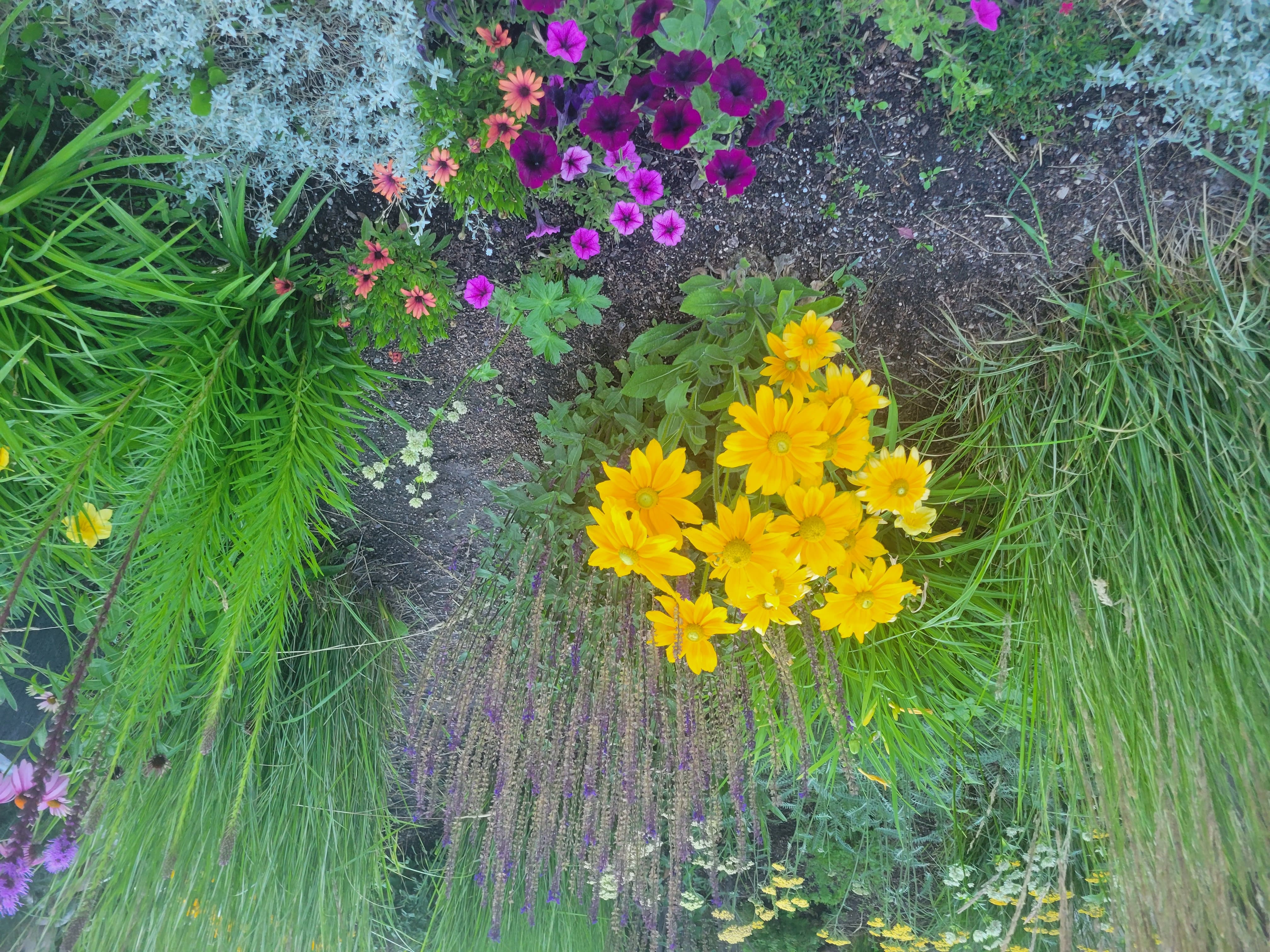
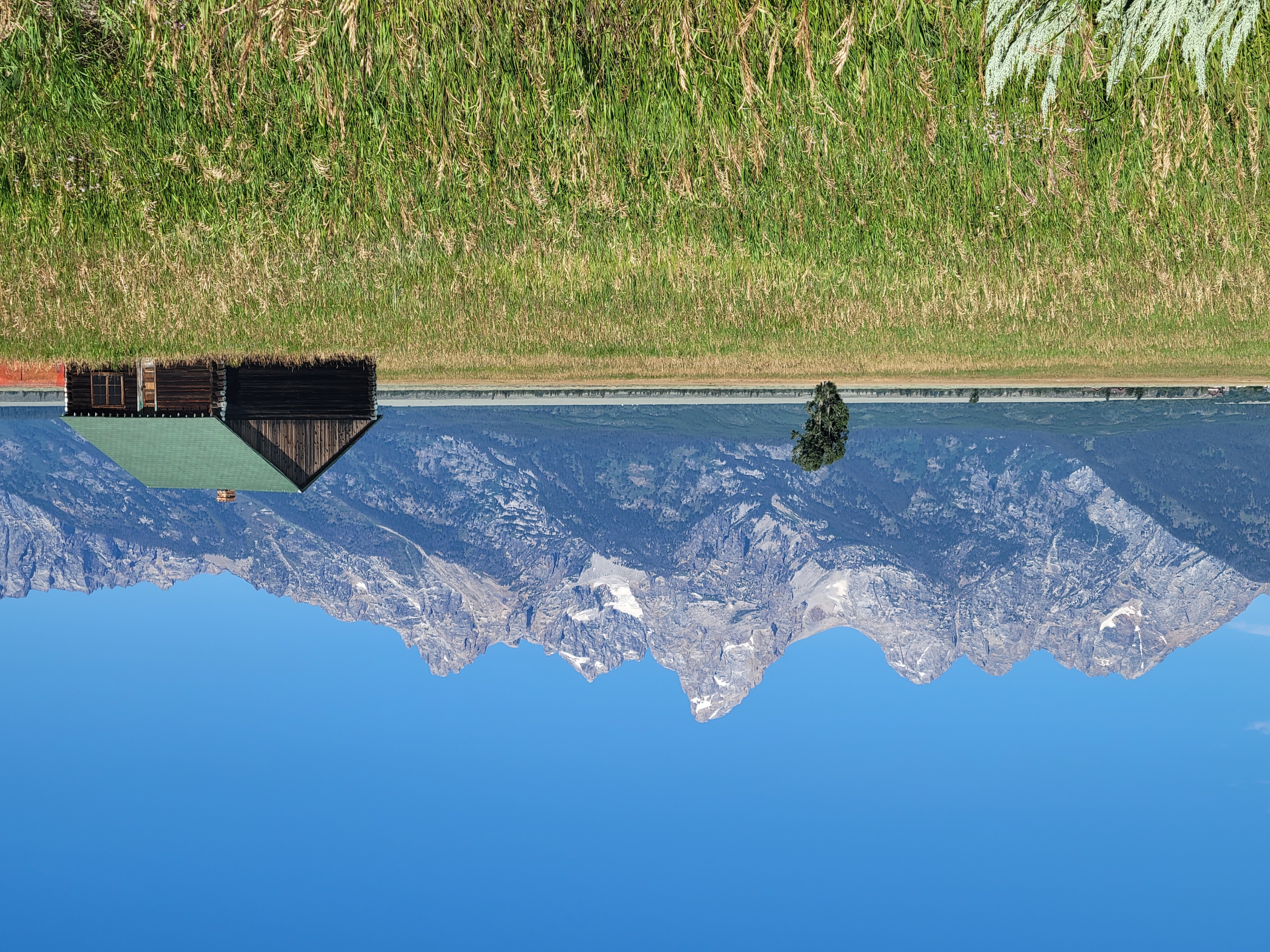
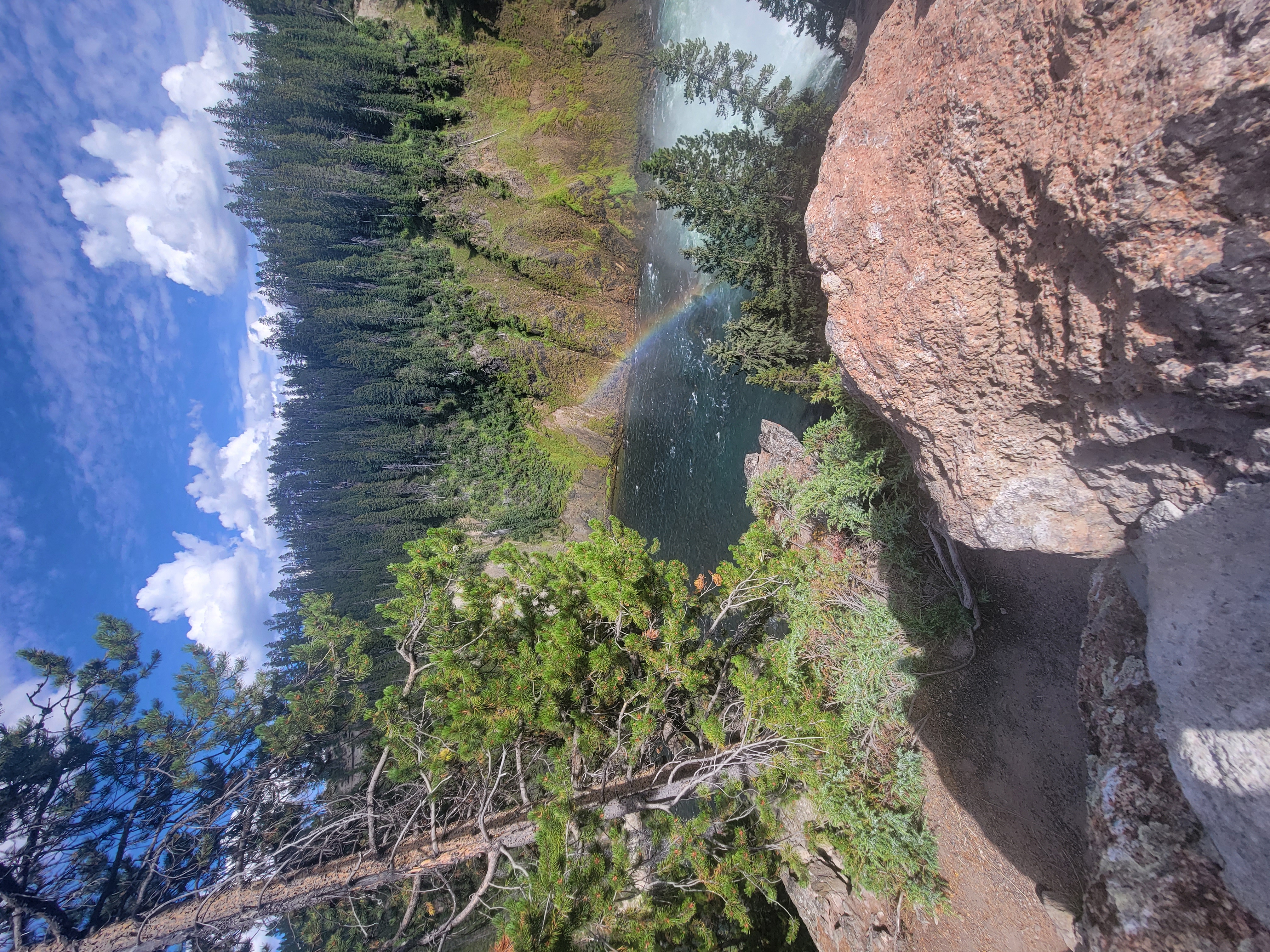
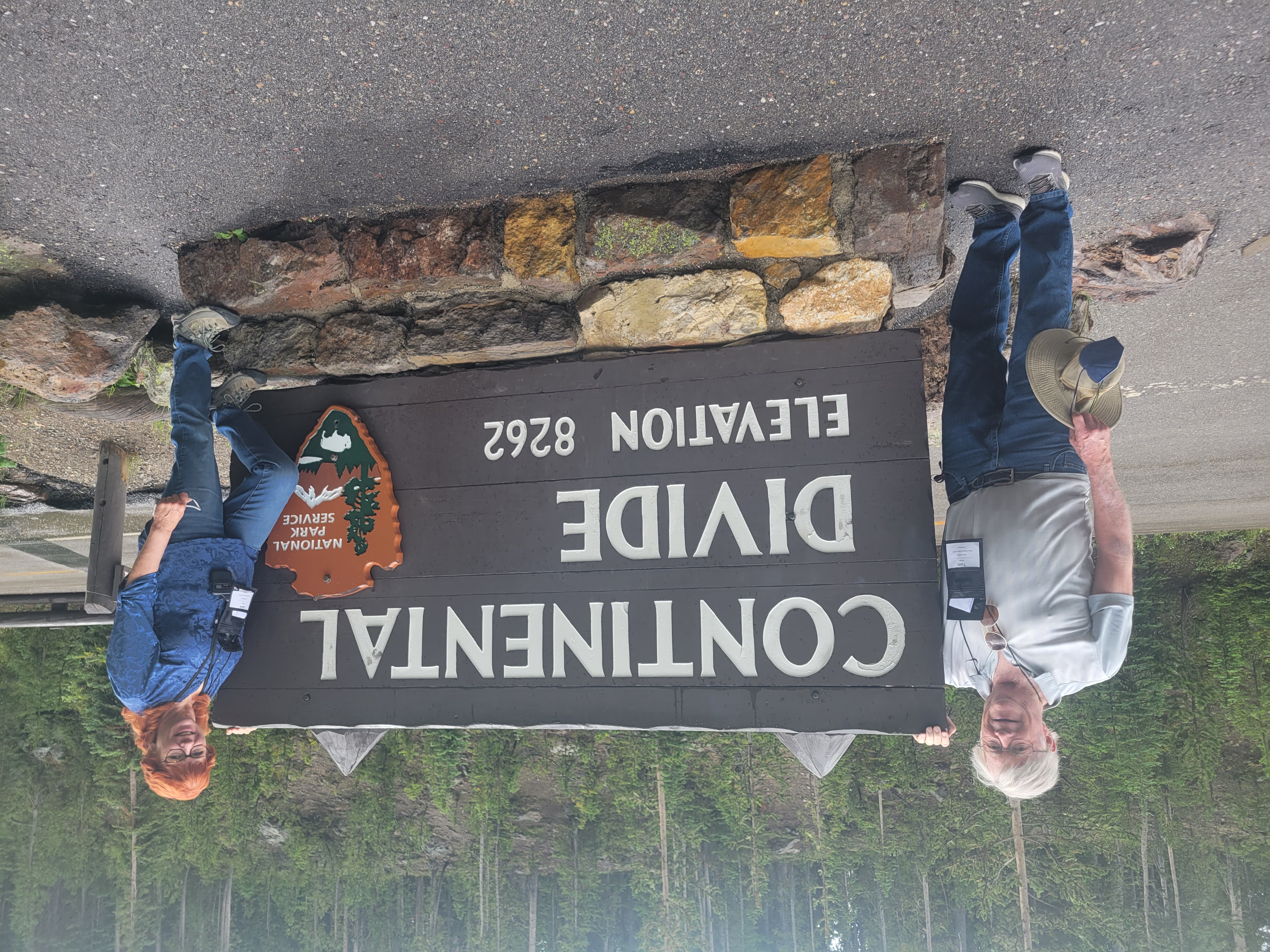
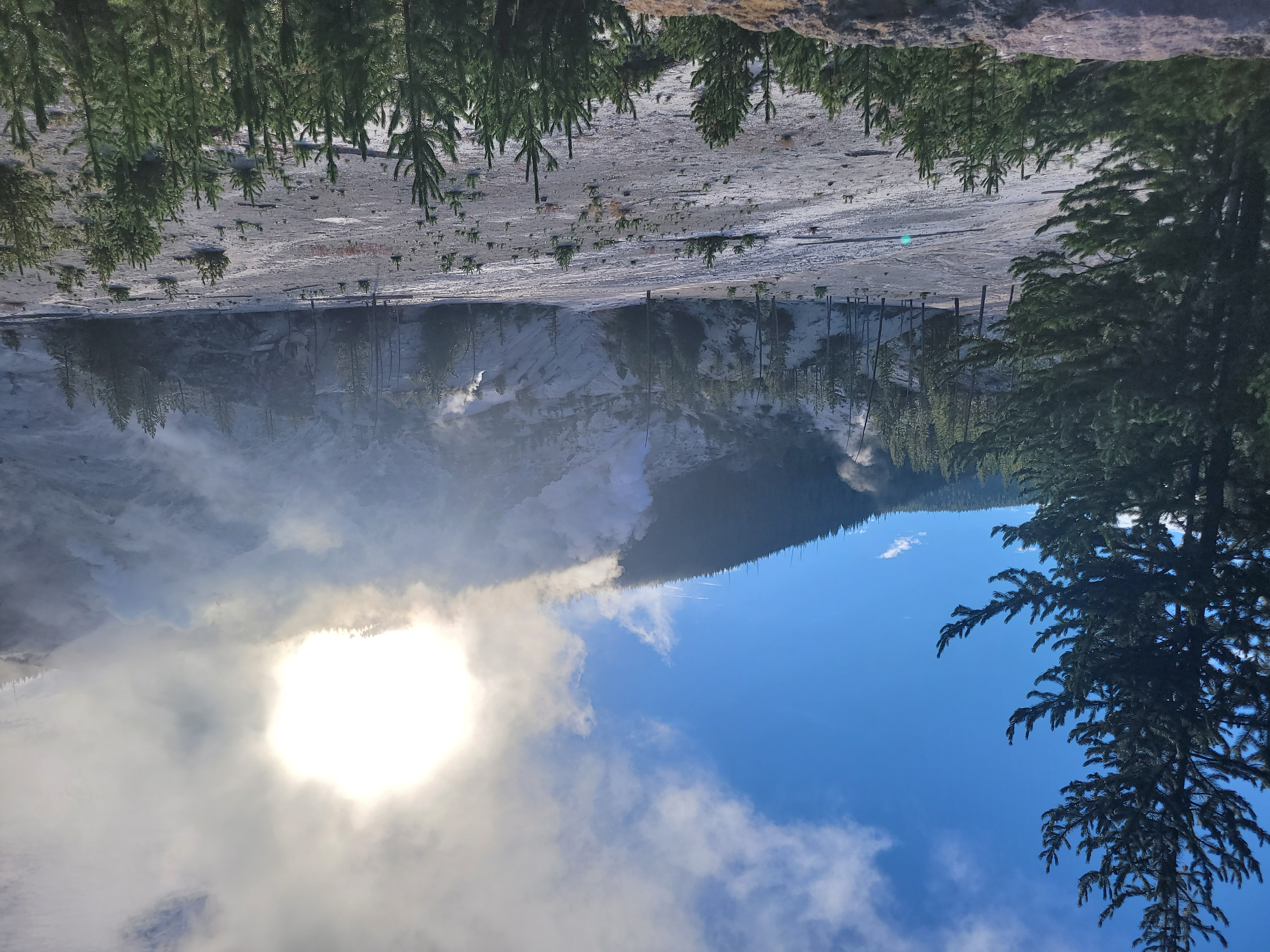
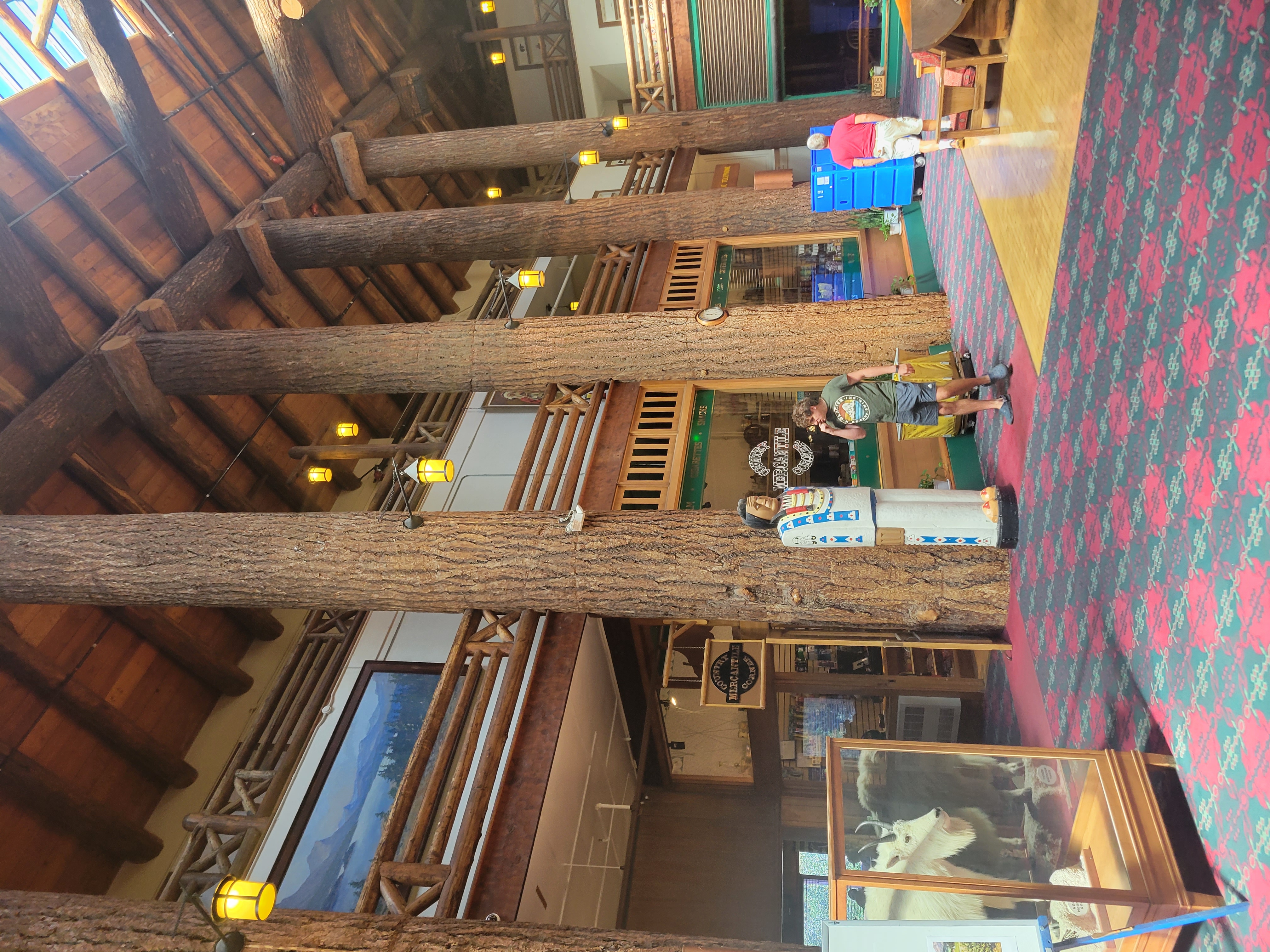
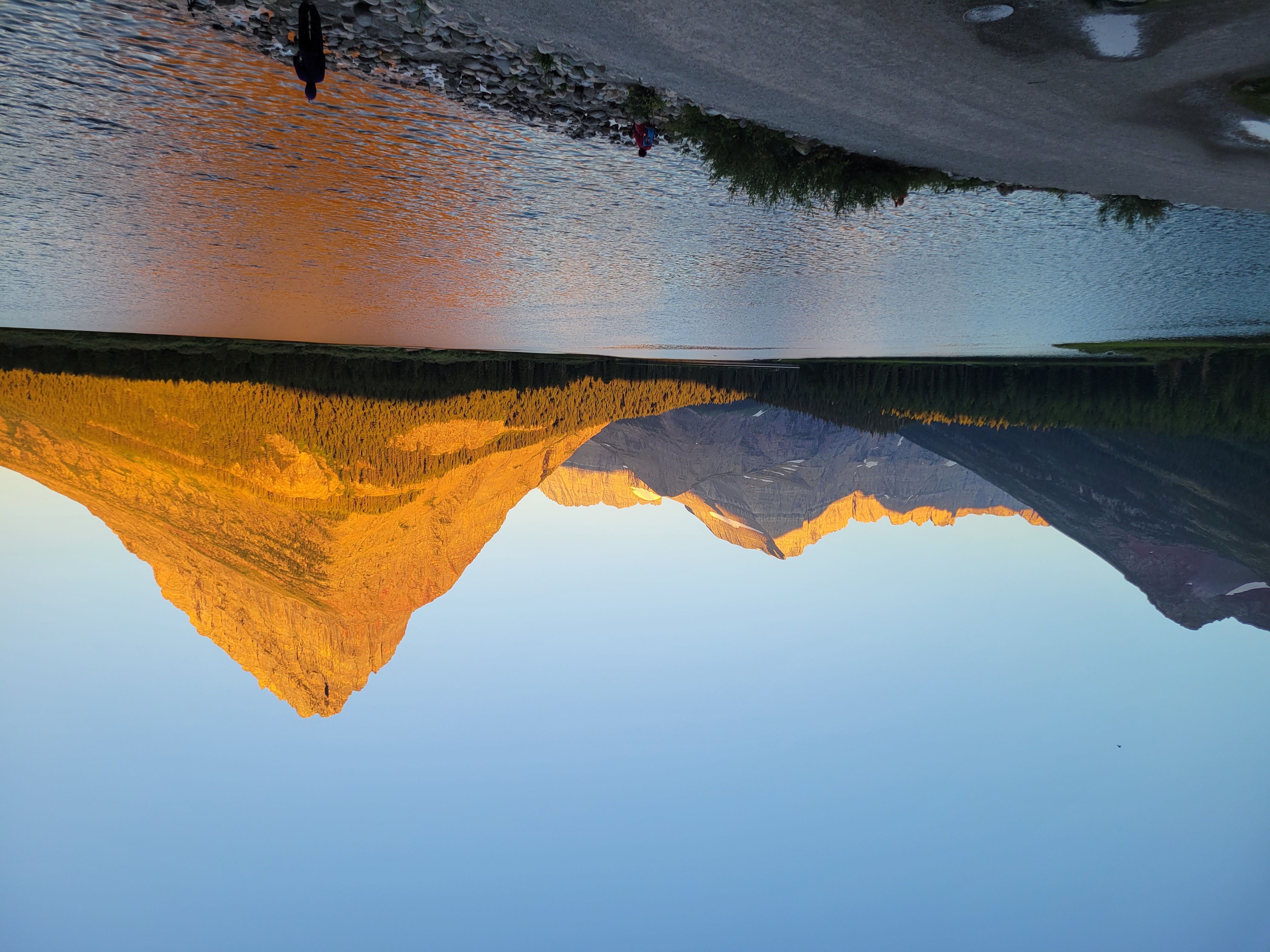
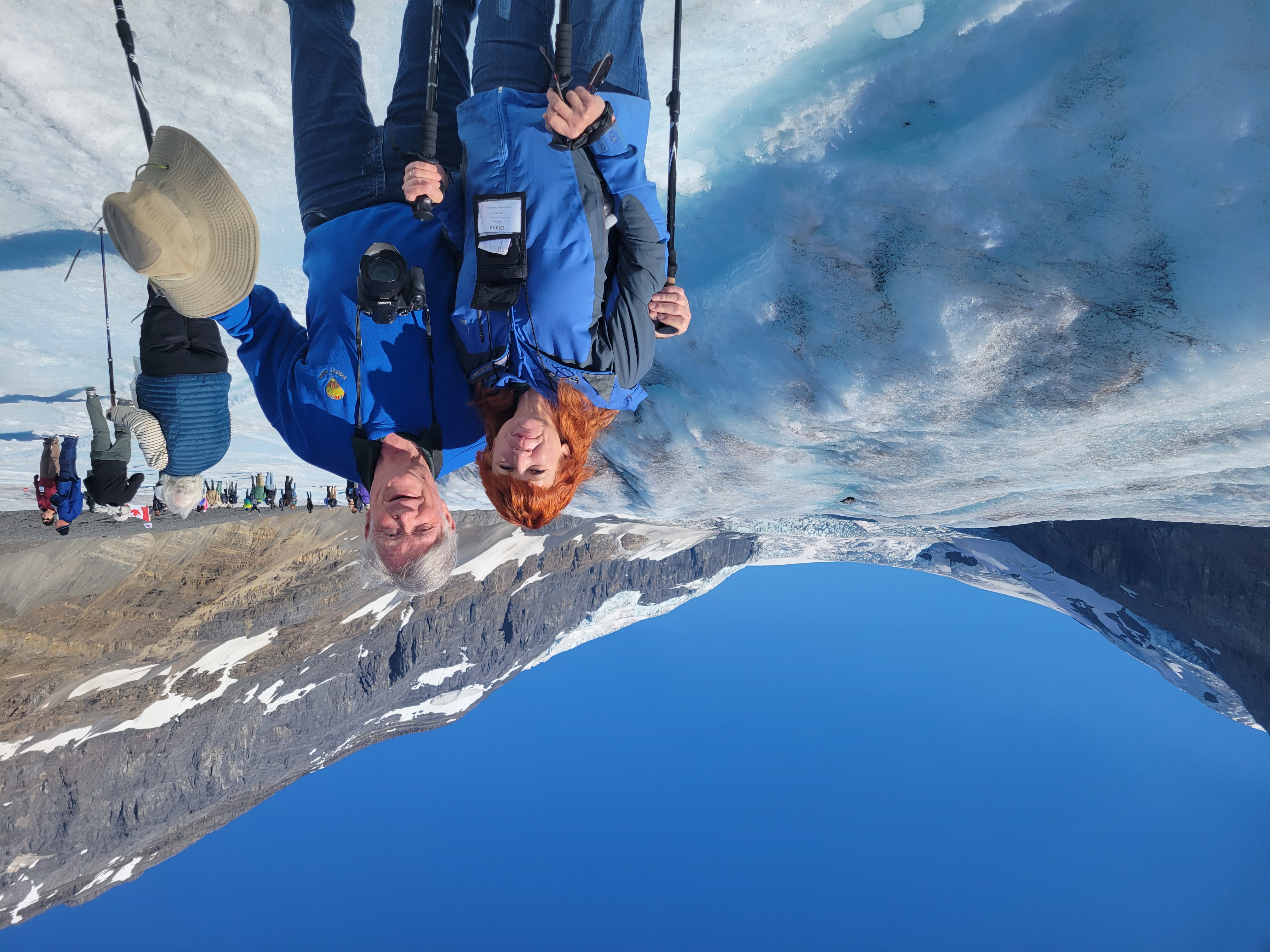
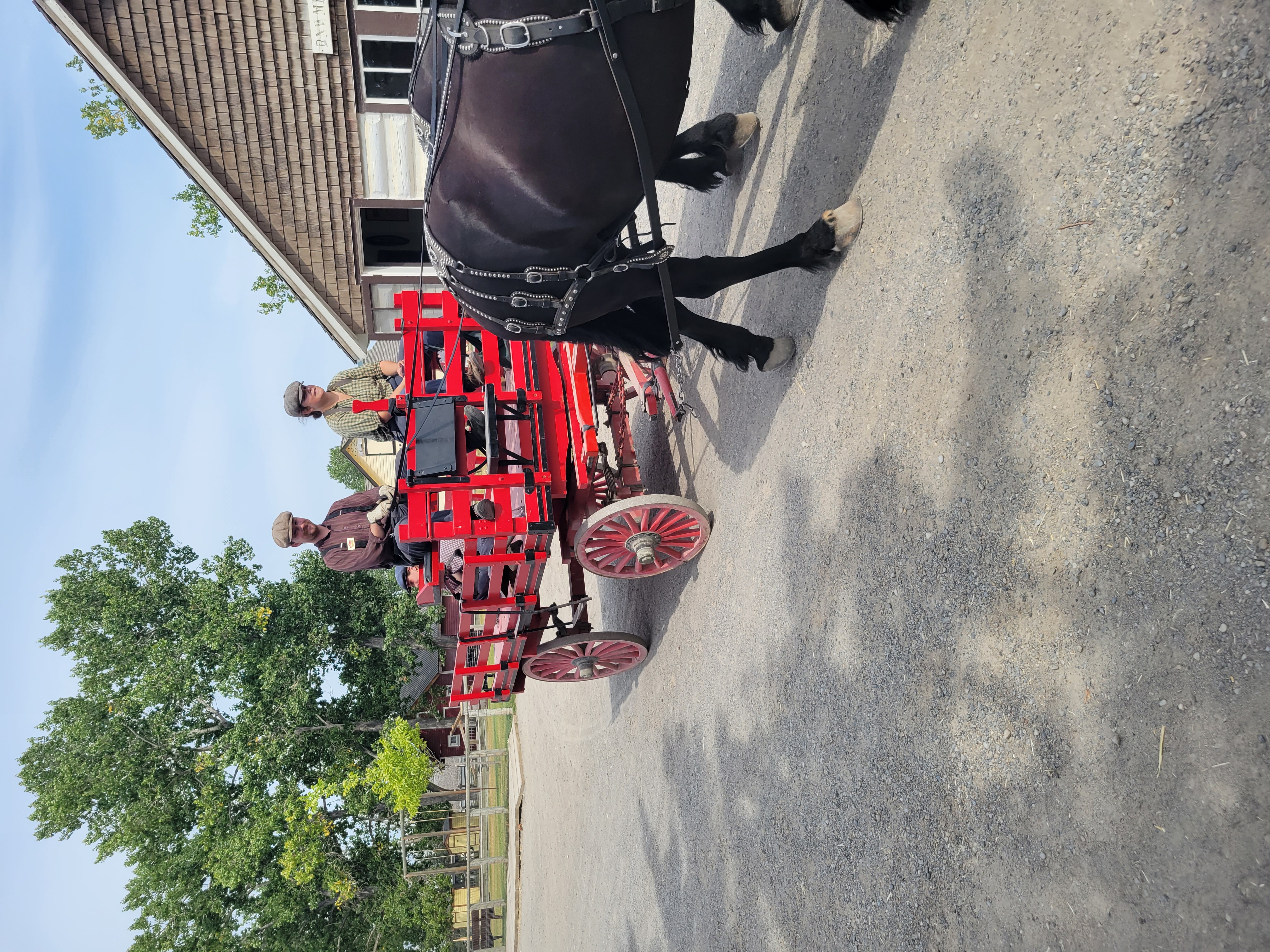
![[Return]](http://www.tomjfisher.com/ar1re_lt.gif)